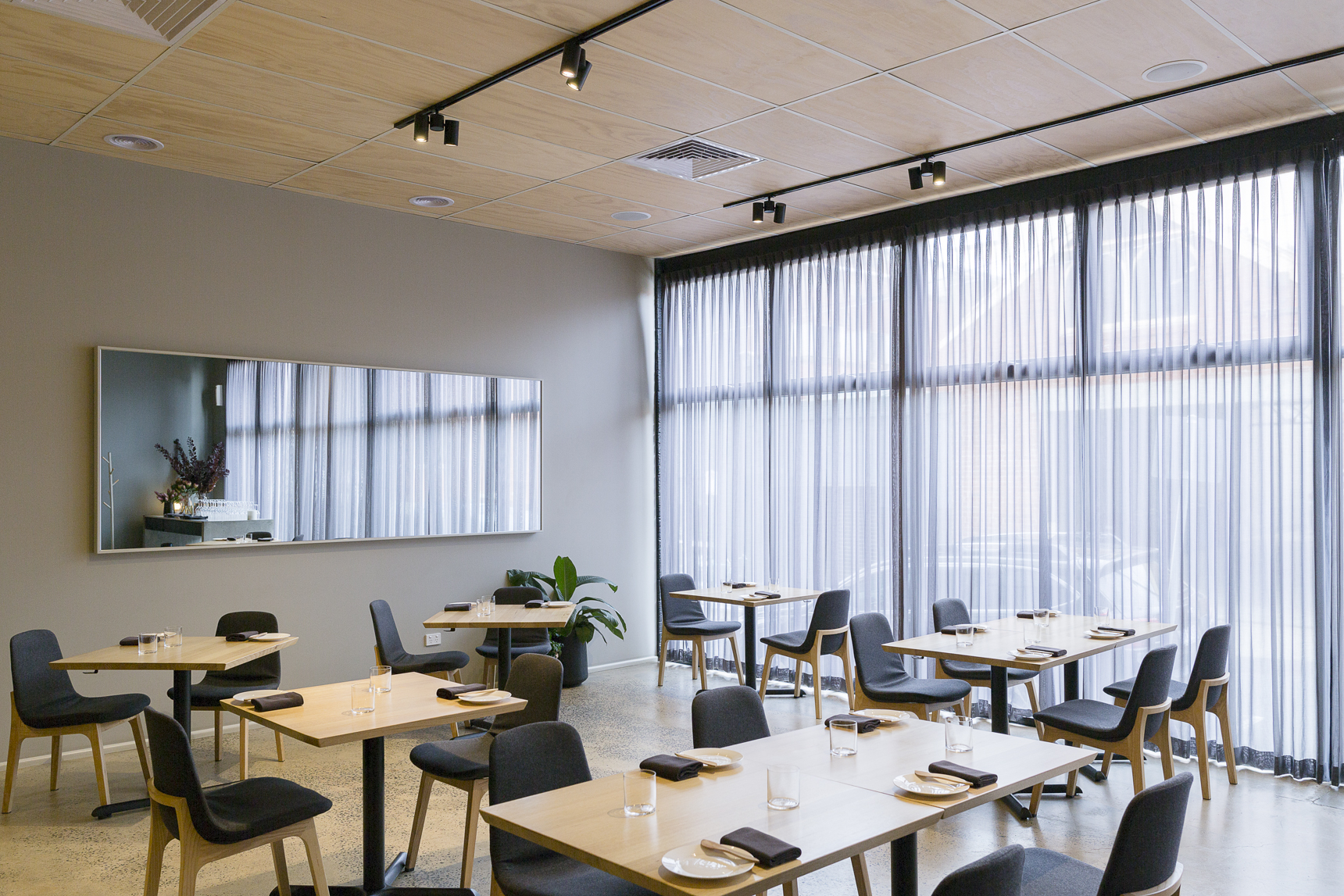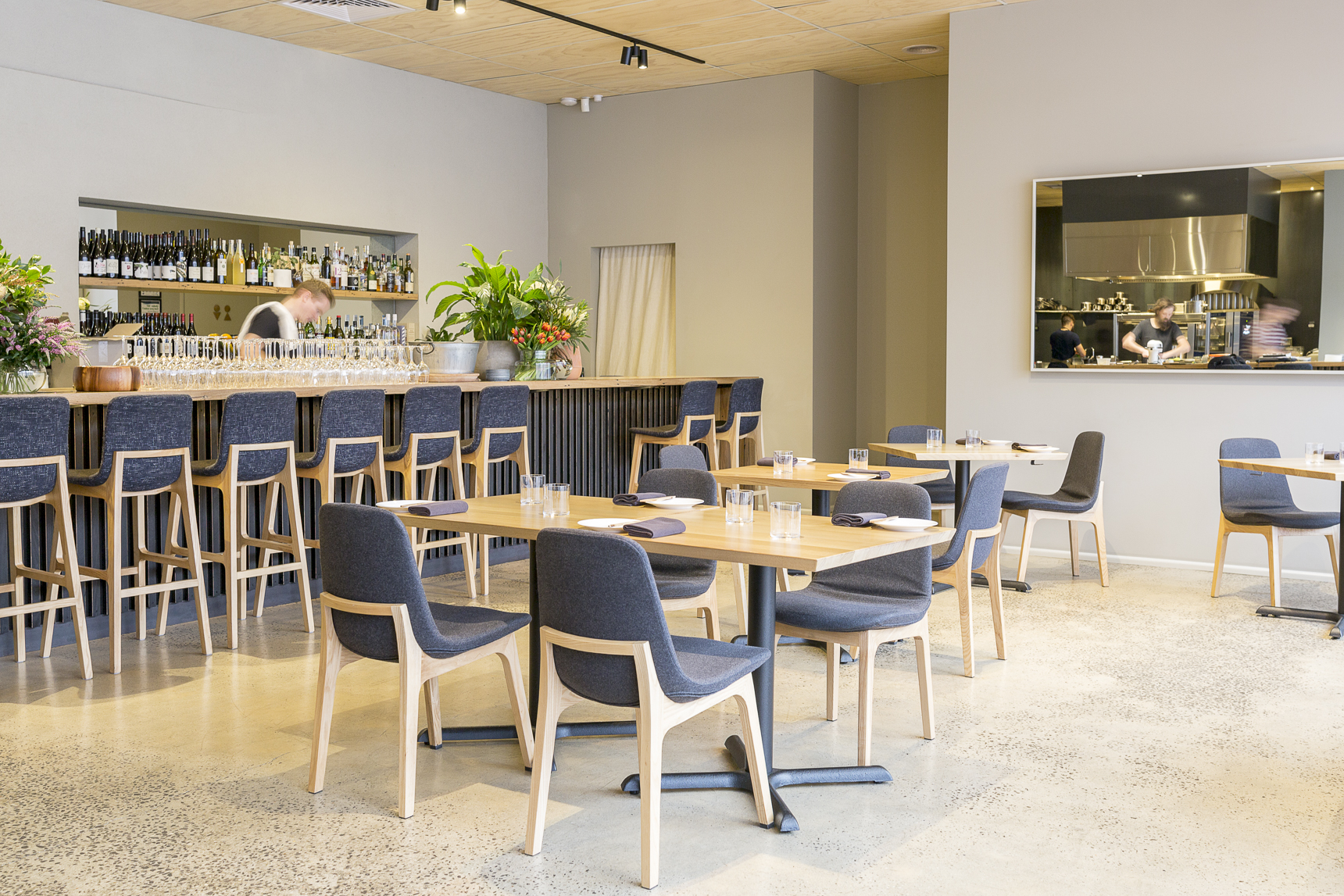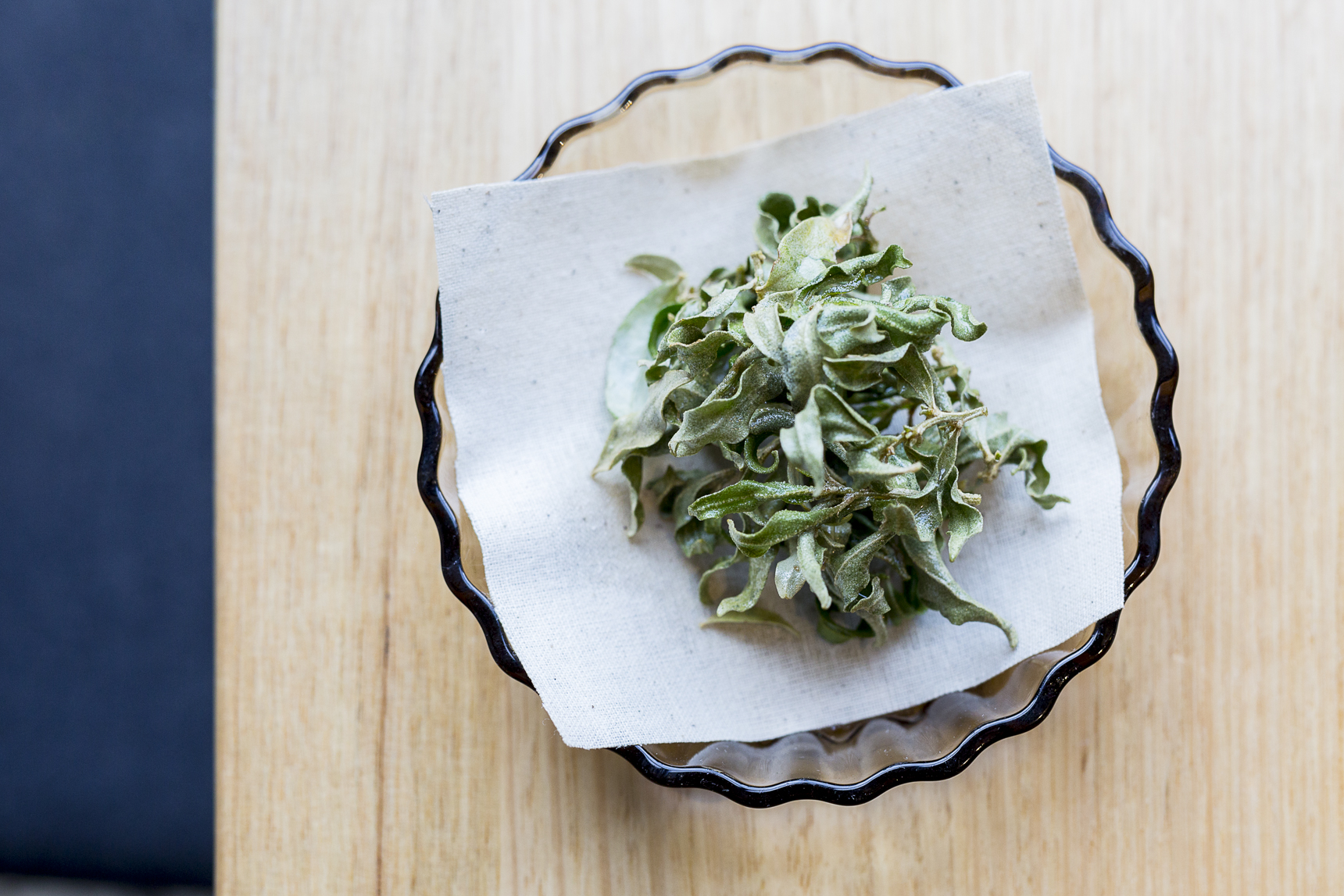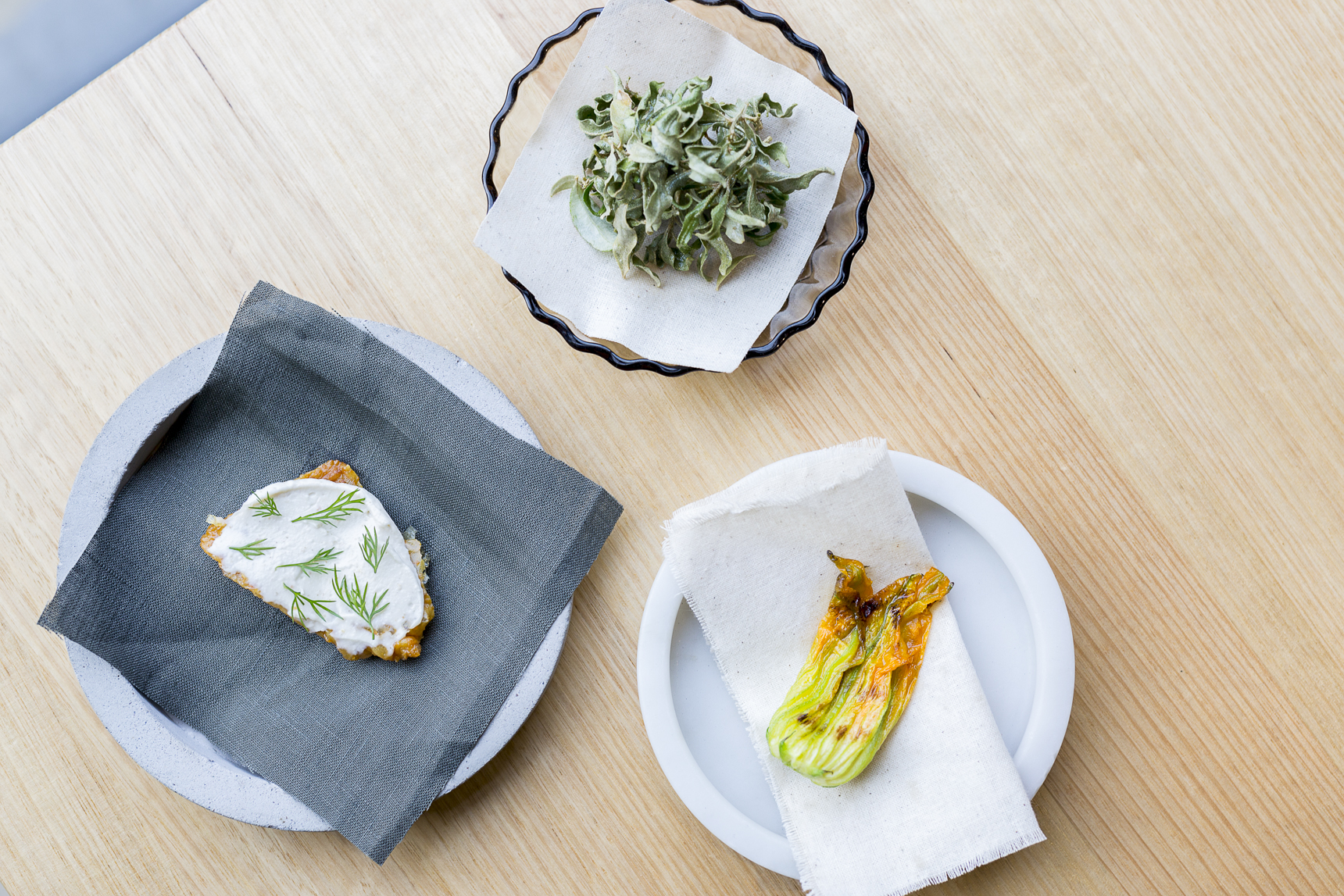Modern-day Geelong, with all due respect, has two major claims to fame: Ford and the Geelong Cats footy team. The former has been sponsoring the latter for what is believed to be a world-record 92 (and counting) years.
As of April, Victoria’s second city might have found a new regional champion, at least as far as eaters are concerned.
But we’re getting ahead of ourselves. Let’s back up for a moment. Remember in April, when Melbourne hosted the World’s 50 Best Restaurants awards? The controversial yet hugely influential event brought international chefs, journalists and other food industry hangers-on to Australia for a week of dining and wining that diets are only just recovering from.
As you’d expect, out-of-towners busied themselves ticking off the essential Melbourne food experiences. Dumplings at ShanDong MaMa. Eating croissants (and queuing) at Lune. Dining at Attica. Road-tripping to Brae. If it had made a splash in the international food media, it was on the 50 Best crowd’s agenda.
Less expected was the level of initiative shown by these visitors. Not just in terms of seeking out Victoria’s lesser-known eating and drinking pleasures, but actually getting to them. Enter Igni, a tiny, 28-seat, tasting-menu-only restaurant in the back blocks of Geelong.
In Latin, igni means “fire” – more on that later – but in Australian dining circles circa 2017, it could just as easily translate to “surprise package of this year’s World’s 50 Best Restaurants award.”
I don’t have exact dollar figures at hand, but based on the number of people I spoke to that studied V-Line timetables and organised hire cars, 50 Best week must have been kind to the bottom line of both Igni and the Bellarine Peninsula economy as a whole. We know of a handful of international visitors that – entirely unprompted – hailed Igni as the single best meal they had during their time Down Under. It’s a claim that has merit.
So about that fire. Like so many it-restaurants, a wood-burning grill sits at the heart of this one. At Igni, almost every dish gets a lick of flame or includes an ingredient touched by fire in some way. Sometimes this exposure is long and gentle. Other times the bursts are short and intense. Almost always, they are delicious.
Fire and smoke not only underpin the menu, but double as navigational aids for first-timers wandering through Geelong’s city centre, following red dots on Google Maps. You’ll almost certainly smell the sweet smoke of Igni before you arrive at its barely-there, dark timber facade.
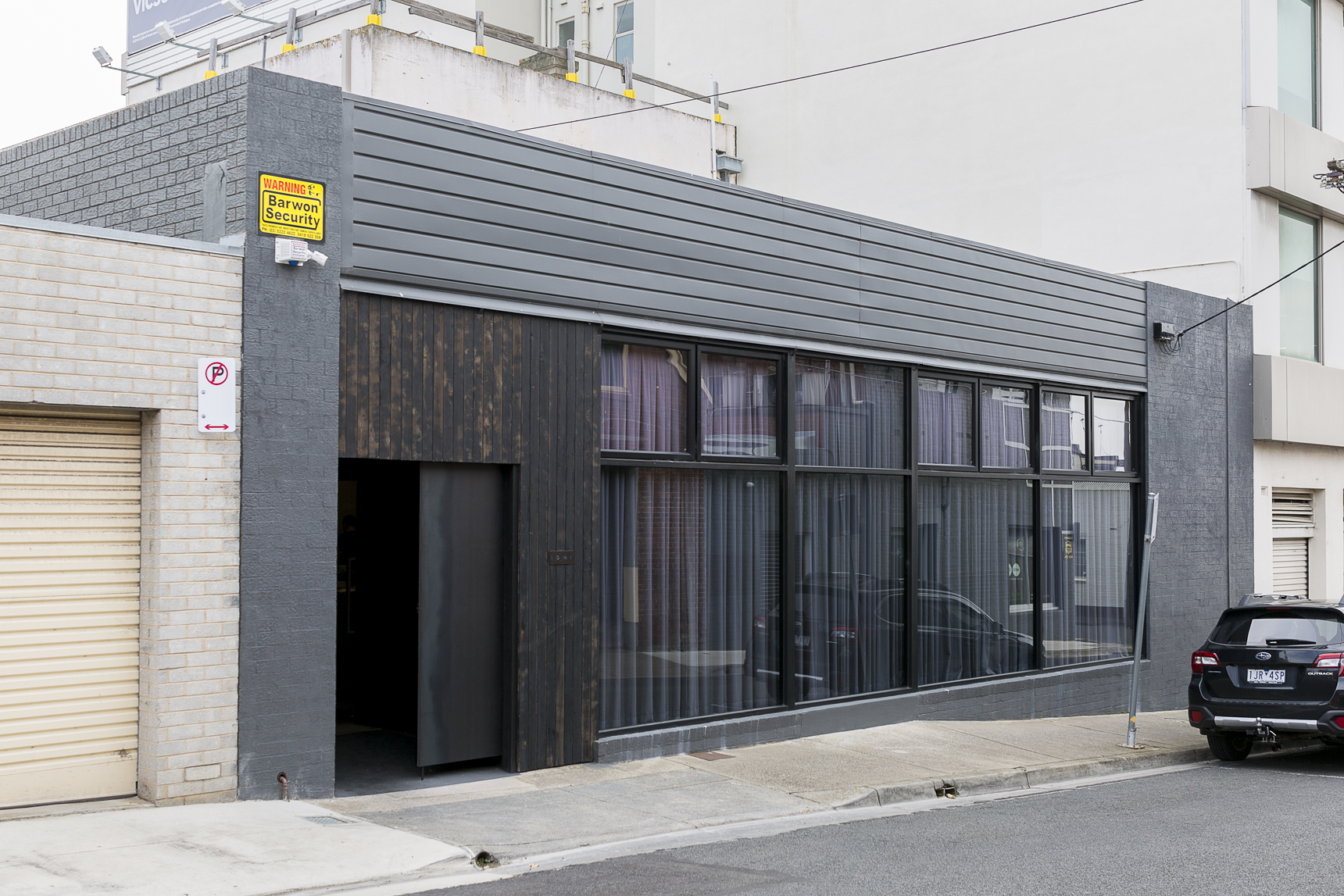
Inside, the look is similarly pared back. The floor is concrete. Handfuls of crisply designed Scandi-inspired tables and chairs dot the room. You can’t help but notice the open kitchen on your left as soon as you enter. That custom-built Tasmanian wood-burning grill sure is something, as is the tight-knit unit of cooks stoking its fire and adjusting its grills. In the thick of the action and calling the shots will be chef and one of Igni’s partners, Aaron Turner. (Jo Smith and Drew Hamilton, the restaurant’s other part-owners, look after the front-of-house). If you’re not familiar with Turner from his previous Geelong restaurant, Loam, or high-profile stints at Noma and El Celler de Can Roca – both former World’s 50 Best restaurants in the world – he’s the chap in flannel sporting one of the finest and bushiest bushranger beards this side of the Gold Rush.
A flurry of snacks, as is standard operating procedure at tasting-menu restaurants, kicks things off. Local Point Henry saltbush fried crisp and sharpened with vinegar. Very good cured meats bandaged around very fine twigs of grissini. Zucchini flowers stuffed with pickled mussels, grilled till the plant just begins to wilt. A cracker of chicken skin topped with tarama (cod roe paste), fennel fronds and electric blue scampi eggs.
Admittedly, these are pretty much the same (delicious, highly covetable) two-bite wonders that prefaced meals when Igni opened at the start of 2016, but as we all know, messing with winning formulas is a silly way to spend one’s energies.
From here, things start to get interesting. If you dined at the hyper-local Loam, you already know Turner as a chef who not only bats for the little guys, but fills his pantry and larder with things they grow, raise and catch. While this fastidiousness ensures team Igni has access to some of the region’s best produce, the downside is there’s never quite enough in Turner’s shopping basket for everyone in the dining room to eat the same things. So while diners have some degree of control when ordering – five courses or eight? Likes and dislikes? Matched wines or ordering by the glass? – you’re essentially at the mercy of the kitchen and whatever 30-or-so dishes constitute its current restaurant playbook. It’s a freewheeling approach that, more often than not, means you’ll be eating different things to the table next to you – and possibly even your dining partner. It also means the entire dining room is a giant, albeit tasty, FoMO attack waiting to happen.
The kitchen’s glorious riff on crudo is more than capable of triggering some breakouts. It begins with getting superbly fresh King George whiting, dicing the flesh of the popular, fast-growing coastal fish and burying the body inside a giant mustard leaf. This sort-of taco then gets a brief grilling before being served with a lively tamarind broth, tiny jewels of salmon roe and dainty white chive flowers. There’s colour. There’s pop. There’s invariably not enough.
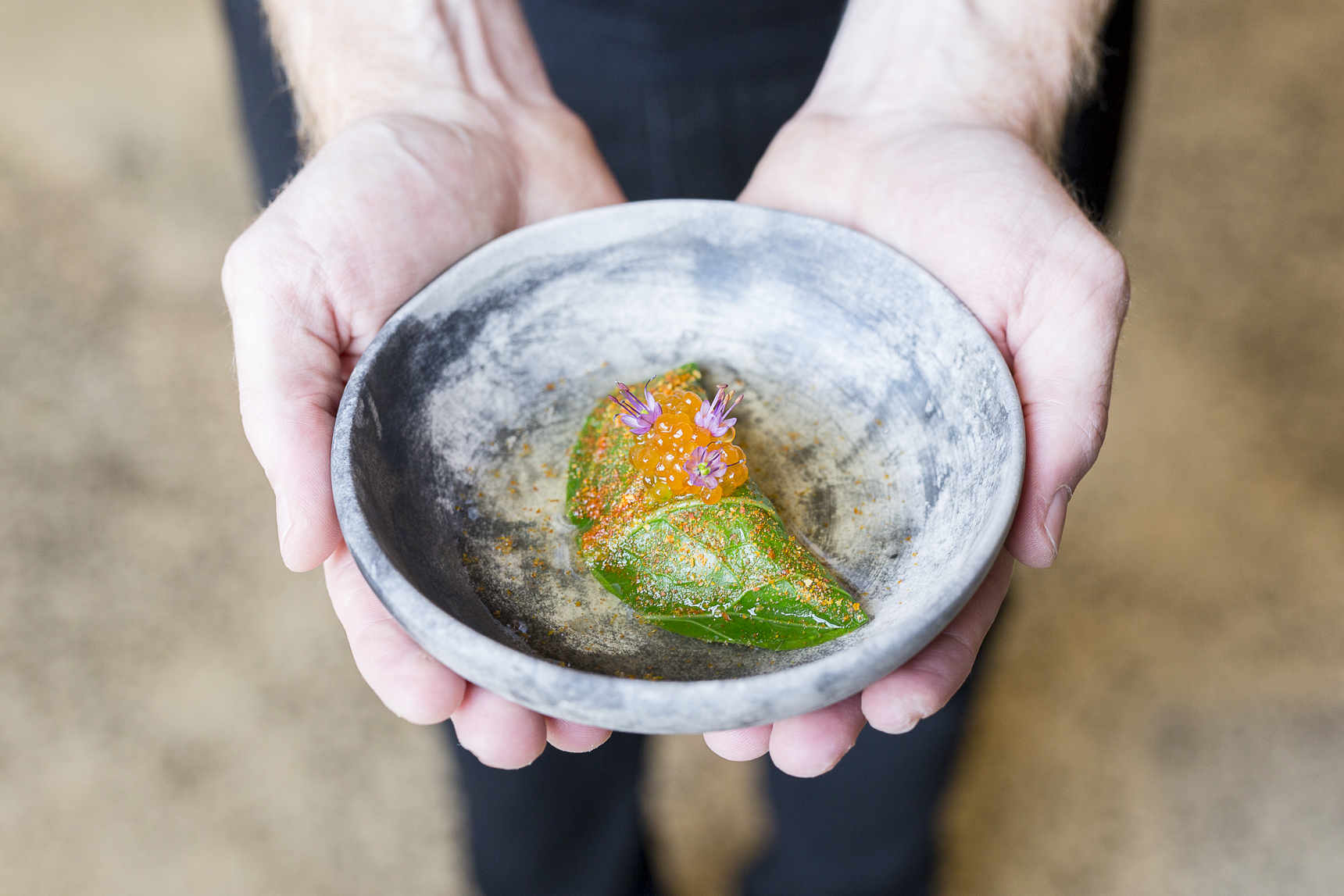
Also from the department of delicious brassica-wrapped seafood: a burrito-like cod and cabbage number that, once neatly packaged, gets grilled hard over flames until blackened and smoky without and just-cooked within. It’s finished with a broth made from yabby shells dried overnight over the fire’s dying embers and, although somewhat hard to believe, tastes even better than it sounds.
Like any self-respecting chef, deliciousness is the name of Turner’s game, but his cooking and buying decisions are equally motivated by being a thoughtful consumer. Even if it means thinking small.
“I try not to demand anything from seafood suppliers,” he says. “I’ll call them up and say I need something to serve raw and ask them about what’s left in the condition I might need it and we just have a chat. Everyone talks about sustainability, but there are restaurants doing a thousand people a week. That doesn’t add up to me. How can you use seafood in a sustainable way if you’re filling 150 seats every day?”

“Everyone talks about sustainability, but there are restaurants doing a thousand people a week. That doesn’t add up to me. How can you use seafood in a sustainable way if you’re filling 150 seats every day?”
His standards are equally exacting with land-based proteins. The bresaola that kicks off the meal is made from Wagyu beef raised by the crew at cult Yarra Valley winery 1000 Candles. A short ferment lends gentle tang to a neatly trimmed brick of fatty local pork belly, while hay and a spell in the cool room helps coax maximum gaminess from juicy Great Ocean Ducks’ Aylesbury ducks. Turner reckons it’s the best duck meat he might have tasted: his enthusiasm isn’t misplaced.
But while flame-kissed meats and seafood chime clearly with Australian ideas about “barbeque”, the strongest endorsement for Turner’s mild pyromania might well be his work with vegetables.
There’s this abalone-esque puck of chewy, leathery carrot, slowly brought to peak deliciousness through a day of careful roasting over the grill (note to self: block out 12 hours to roast carrots next time I fire up the Weber). The sweet savour of roasted beetroot in a pool of whey, all concealed with a charred mustard leaf. Both reiterate the truism that, in this enlightened age, no meat doesn’t have to equal no fun.
[pullquote]{While flame-kissed meats and seafood chime clearly with Australian ideas about “barbeque”, the strongest endorsement for Turner’s mild pyromania might well be his work with vegetables.}
My vote for Igni’s best plant-based dish, though, goes to its potato and egg signature. Whereas simpler cooks (read: you and I) might be content transforming these pantry staples into a frittata or greasy breakfast hash, Turner has loftier, grander ambitions.
He begins by cutting long “noodles” out of waxy King Edward spuds, washing and soaking them, then blanching these strands in the same starchy water they’ve been resting in. The process apparently makes it easier for the digestive system to process the tuber. Finally, the potato is toasted in garlic-enriched roasted chicken fat – hey, we said the dish was plant-based – before being arranged into a neat pasta-like twirl. A raw egg yolk finishes the dish while a little hillock of pipi meat hides beneath it all. This seafood surprise is certainly a nice bonus, but the dish doesn’t live or die by it. The guys in the Igni kitchen could arrange those noodles over a hillock of torn TAB receipts and your first forkful would still make your eyes roll back into your skull. The plant kingdom, according to Turner, is awash with potential.
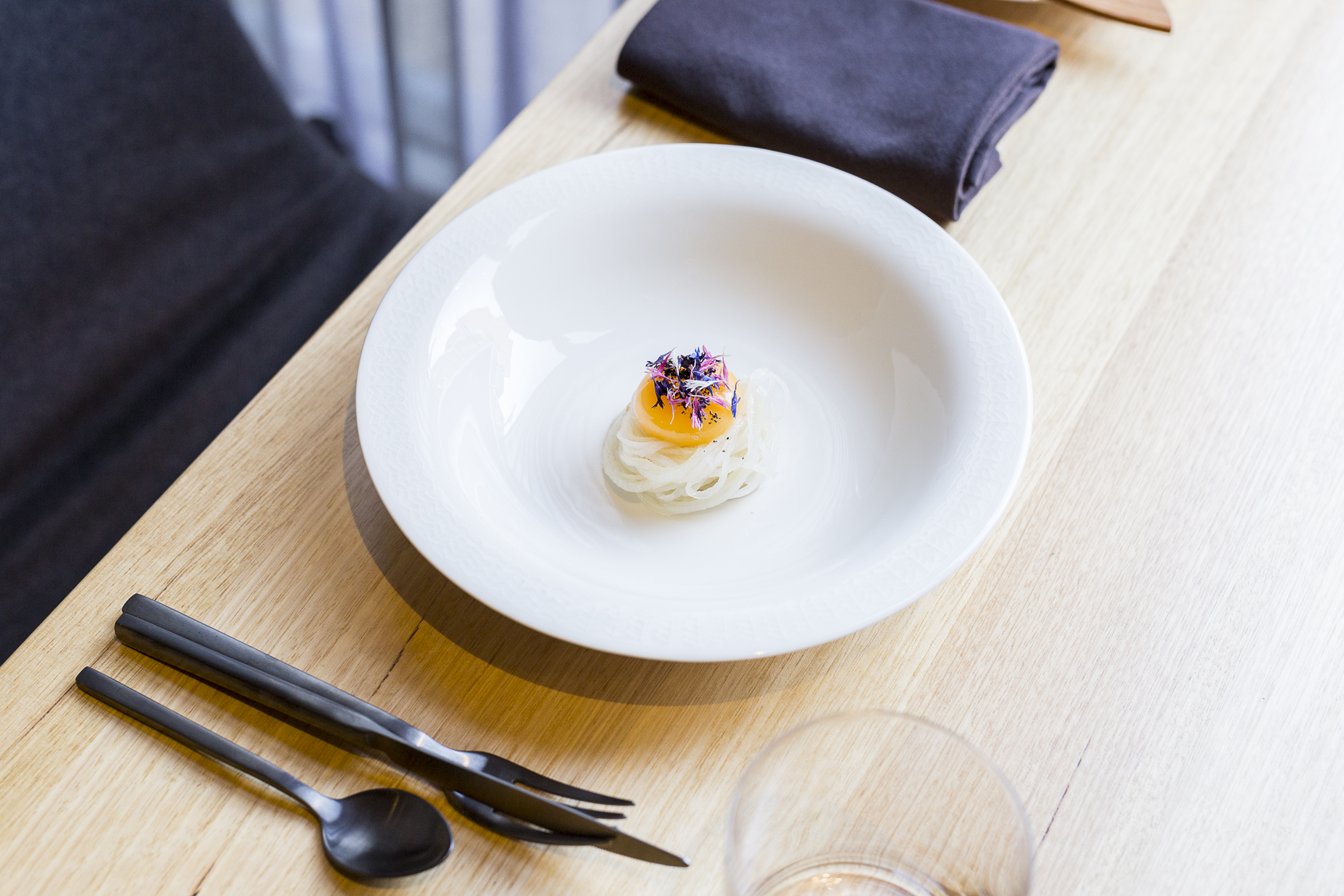
“Give most vegetables a bit of time and effort and they’re pretty amazing things,” says Turner. “They’ve got a lot more depth, character and structure than a shitty piece of meat. It’s just as important to get good vegies as it is meat. People think vegetables should be cheap, but good ones aren’t.”
[pullquote]{The guys in the Igni kitchen could arrange those noodles over a hillock of torn TAB receipts and your first forkful would still make your eyes roll back in your skull.}
Vegies also feature at the end of the meal, and not in a pumpkin pie, carrot cake or beetroot-in-the-chocky-cake sort of way, either. Igni’s onion ice-cream with quinoa cracker sounds like a shock value combo, but the blend of sugar, milk, egg yolks and sweet wood-roasted onions is so compelling, I can’t help but wonder how else the allium family could benefit dessert-kind.
The rest of the sweets are, by comparison, a little more conventional, yet stay true to Igni’s source-local-cook-global thinking. My fondest memory? The cleverly named “Old Ewe, New Ewe” that plays creamy, salty Roquefort cheese (a sheep’s-milk blue cheese produced in the south of France) with a granita made from Meredith sheep’s-milk yoghurt. It’s part cheese course, part palate cleanser and all good.
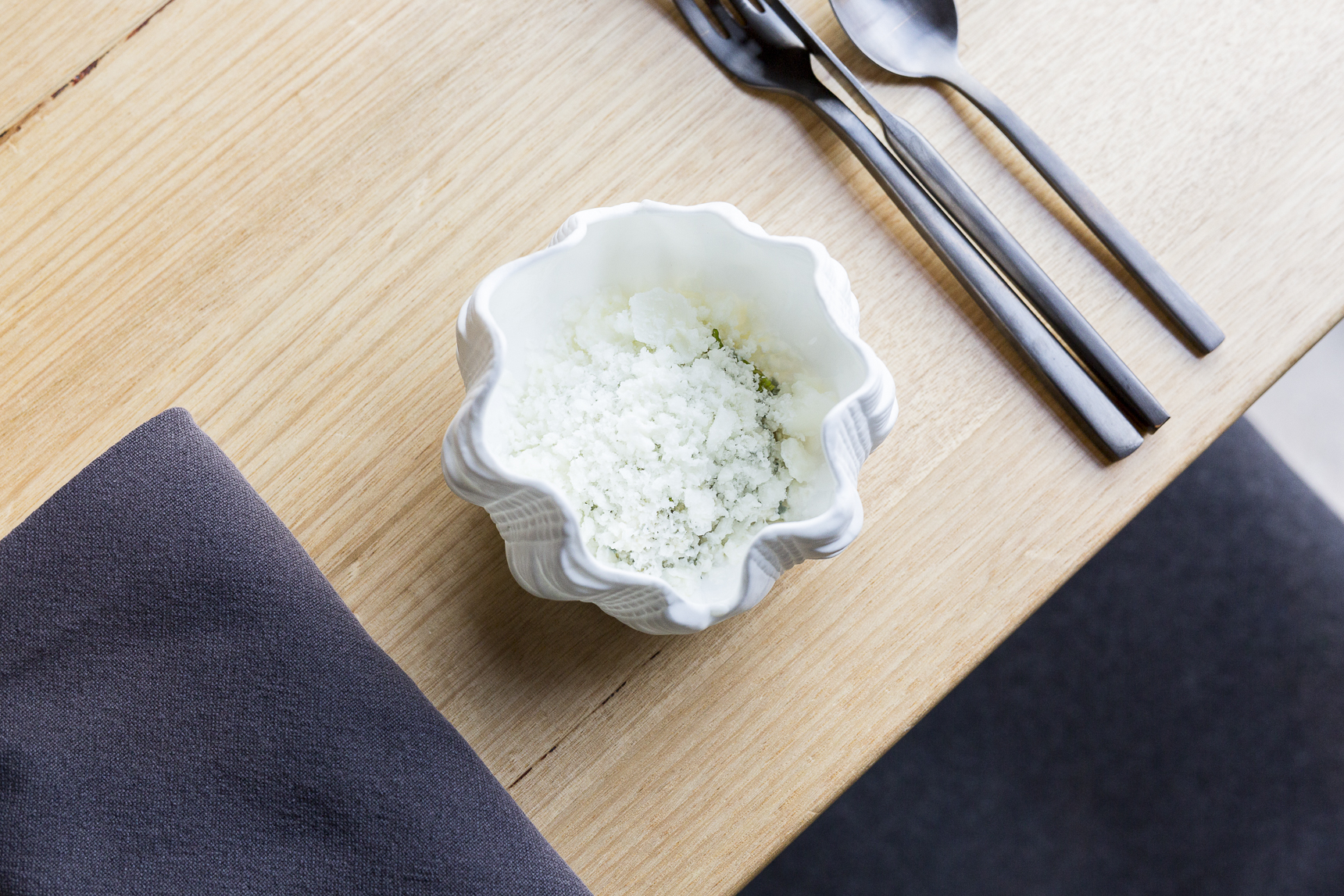
So why kick off Broadsheet’s Restaurants of Australia series with Igni? Despite being unquestionably of the moment, this plucky diner is, in many ways, a poster child for the way restaurants used to be. Small. Owner-operated. With a fierce commitment to local produce and producers (and not to mention winemakers – scoring a reservation here is as much an education on local booze as it is local food). That Turner et al are championing humankind’s oldest cooking method only adds to the sense of romance.
Between the samey-sameyness of certain menus and the rise of franchise restaurants, we live and eat at a time when food is slowly becoming homogenised. Igni is very much the opposite: a place brimming with ideas that tastes and feels of where it’s from. If you took Igni out of Geelong, you’d also be taking the Geelong out of Igni. It’s no coincidence, I think, that Turner grew up in this part of the world. He might drive a Nissan rather than a Ford, and be more interested in the cricket score than the footy, but there’s no questioning his love for Geetroit.
Igni
Ryan Place, Geelong
(03) 5222 2266
Hours
Thu to Sat 6pm–11pm
Fri to Sun noon–3pm
restaurantigni.com
Similar restaurants around Australia:
Firedoor (Sydney)
Manuka Woodfire Kitchen (Perth)
Pony Dining (Brisbane)
Africola (Adelaide)
